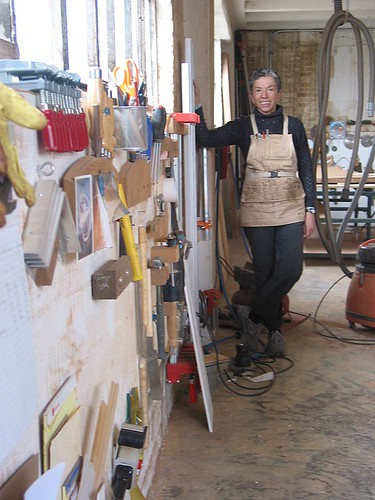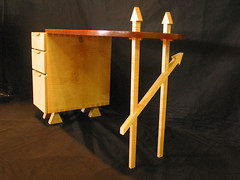NoMa Studio Tour
I only made it to one of the buildings, 411 New York Avenue NE, but it still was an eyeopener. I probably went to about 10 studios, and I just never would have expected to find a custom furniture maker within a mile or two of where I live. Unfortunately, I didn't have my camera, because there were a few shots I really wanted to take. Next time...
Apparently, there have been studios in the General Typographers building for about 25 years. With technological improvements, the company just doesn't need as much space for equipment as it once did. (Note: the North Capitol corridor area used to be a big center for the printing trades, because of the presence of the General Printing Office, and the people who left there to start printing-related businesses. The XM Satellite Radio building used to be Judd & Detwyler Printers, etc.)
Anyway, one of the studios is Sidney Margolis'. She started learning woodworking about 6 years ago, beginning at the Woodworkers Club in Rockville. Now she makes and sells custom pieces.
 Sidney Margolis, Furniture Maker, in her shop. (Photos from her website.)
Sidney Margolis, Furniture Maker, in her shop. (Photos from her website.) Arrow Desk. This piece is in her shop now. It looks even better from the top.
Arrow Desk. This piece is in her shop now. It looks even better from the top. _________
There are few such buildings in Washington that offer relatively raw space for artists. We never had much of this kind of building stock to begin with, because the city never had an industrial tradition--other than the Navy Yard, and for awhile a steel plant that serviced it, certain kinds of building supplies (bricks), and printing. Most of the "industrial" buildings along the railroad to Union Station, and once upon a time to the Baltimore and Ohio Freight Terminal, were warehouse and distribution businesses for receiving, organizing, and delivering goods to city dwellers and businesses.
Preserving such buildings for arts and creative uses will be very very difficult given the strength of the real estate market in the city. Nonetheless, this issue needs to be considered going forward.



0 Comments:
Post a Comment
<< Home